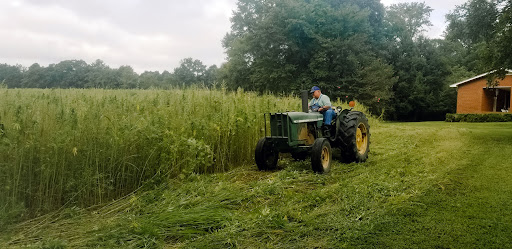Throughout history and into the modern era, natural bast fibers have been highly regarded for their use in beautiful, durable textiles. Bast fibers derive from the tissue in the outer layer of certain common plant stems including flax and hemp, as well as some lesser-known fiber plants, including dogbane, nettle, pineapple, capok, and ramie.

In these plants, the hollow fibers transport dissolved sugars and lend structural support for the stem. In textiles, the fibers provide strength and many other unique, natural properties. Many bast fiber plants can play a valuable role in crop rotations and some can provide high yields of both food and fiber with relatively minimal inputs.
The versatility of bast fibers can empower communities and small farmers. Plant fibers can also be a solution as the fashion industry grapples with its environmental impact and seeks sustainable alternatives. This five-part series captures stories and perspectives from bast fiber growers, researchers, processors, and artisans in the Fibershed community about the state of the soil-to-soil systems of these unique plants and their potential to revitalize local economies and regenerate the environment.
Native Plants for Textiles: 3 Bast Fibers to Know Beyond Hemp and Flax
By Nicholas Wenner
While hemp and flax are the most commonly used bast fiber plants, many others have also been used for textiles throughout history and the world. This article dives into the habitat, history, uses, and fiber qualities of the native plants dogbane, nettle, and milkweed — all three suitable for spinning into yarn. The overview, which incorporates research developed for Fibershed’s 2019 Bast Fiber Exhibit, provides insights into the processing of these lesser-known bast fibers and a comparison between the types.
The Hemp Casita of Rezolana — Rising up from the Ground
By Koa Kalish

At the base of the southernmost subrange of the Rocky Mountains, Arnold (Arnie) Valdez builds a casita using Compressed Earth Bricks (CEB) handmade from a mixture of adobe and homegrown hemp fiber. Hemp is “a miracle plant,” says Arnie, owner/operator of the Rezolana Institute — a sustainable farming and research center incorporating appropriate technology and renewable energy applications. In this profile, the master builder and designer considers the potential for hemp fibers in the creation of building materials, and reflects on ways agriculture and architecture go hand in hand.
Flax in West Coast Fibersheds: From Field to Mill
Written by Nicholas Wenner, Shannon Welsh, and Sandy Fisher

For nearly 100 years, the flax industry in the United States flourished. Post-World War II, loss of subsidies and competition from synthetic fibers and cotton forced flax processing and commercial growth to diminish. Now, Chico Flax in the Sacramento Valley of California, and Fibrevolution in the Willamette Valley of Oregon, are leading revitalization of the flax textile industry in the region. This article from 2019 offers background on both groups and highlights flax’s agricultural benefits and role in providing high-strength fabrics.
Spinning the Structure of Life with Paleotechnics
By Koa Kalish

Ancient living skills instructor Tamara Wilder specializes in string-making, which she does primarily from dogbane — a regional fiber native to North America, and the predominant fiber used by Native Americans all over the United States. For more than 20 years, she has passed on her unique expertise primarily to 6th graders through a program coordinated with the local school’s ancient civilizations curriculum. Read on to discover how Tamara views string as “the structure of life,” and children “the hope for our future.”
Harvesting Hemp: Reflecting on Opportunities with the One Acre Exchange
Written and photographed by Tyler Jenkins

Tyler Jenkins of One Acre Exchange in North Carolina’s Piedmont region is dedicated to supporting farmers and artisans in the expansion of the industrial hemp industry. In this article, Tyler offers a detailed look at the process involved in harvesting a hemp crop. He examines key barriers to hemp’s place in the farms of the future — including seed availability and rigid production regulations — and potential approaches and market opportunities for overcoming those barriers.

